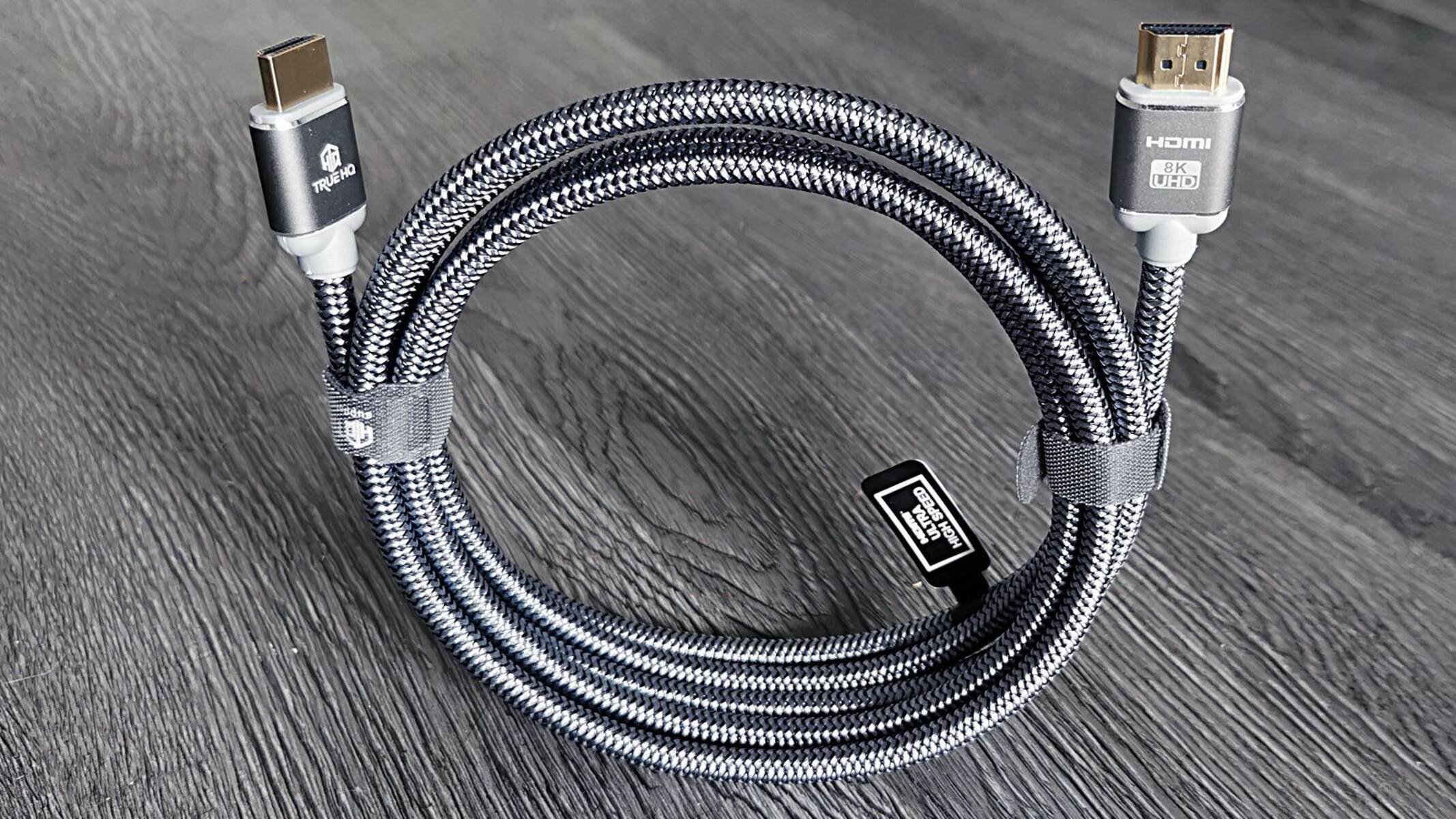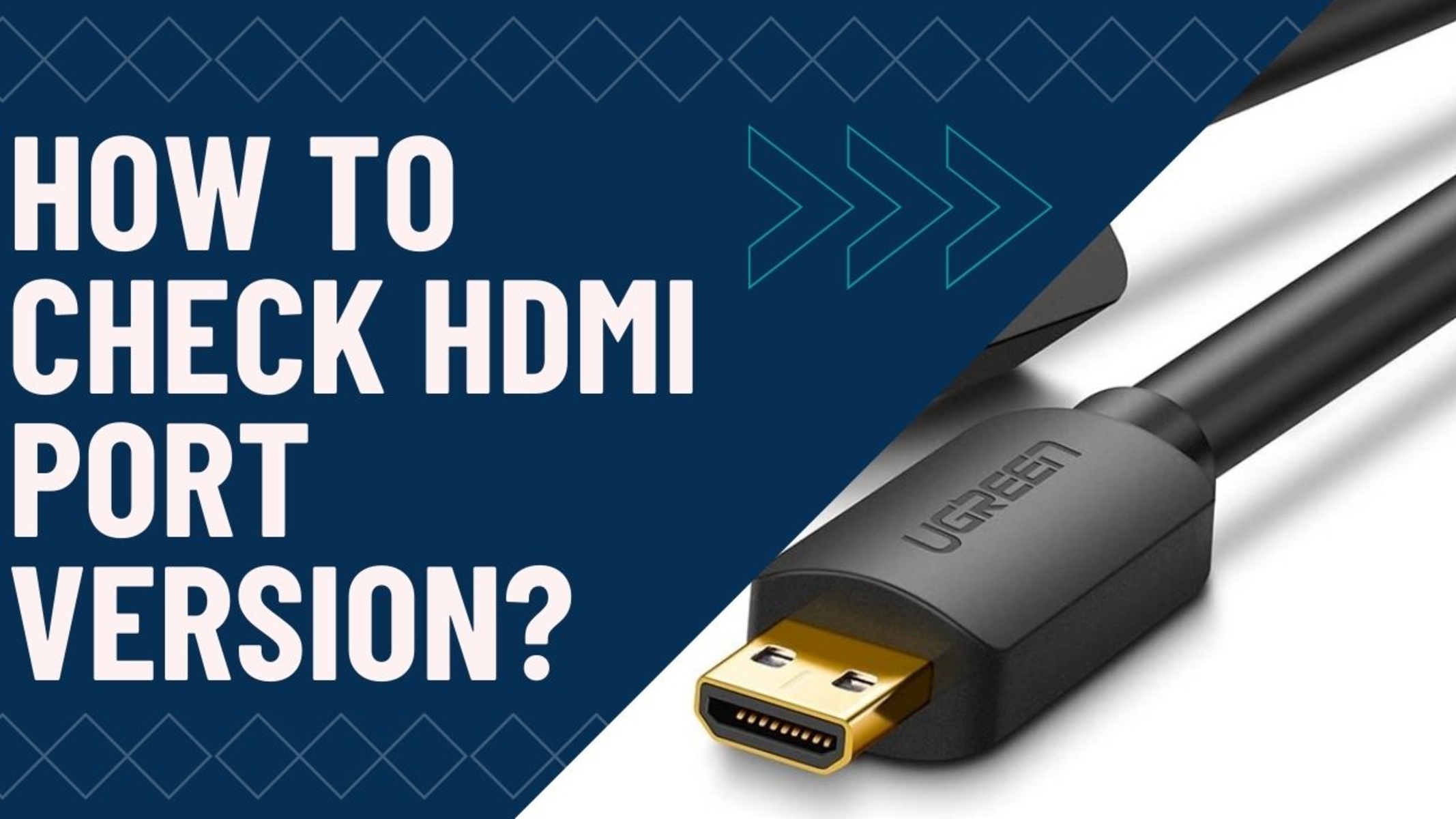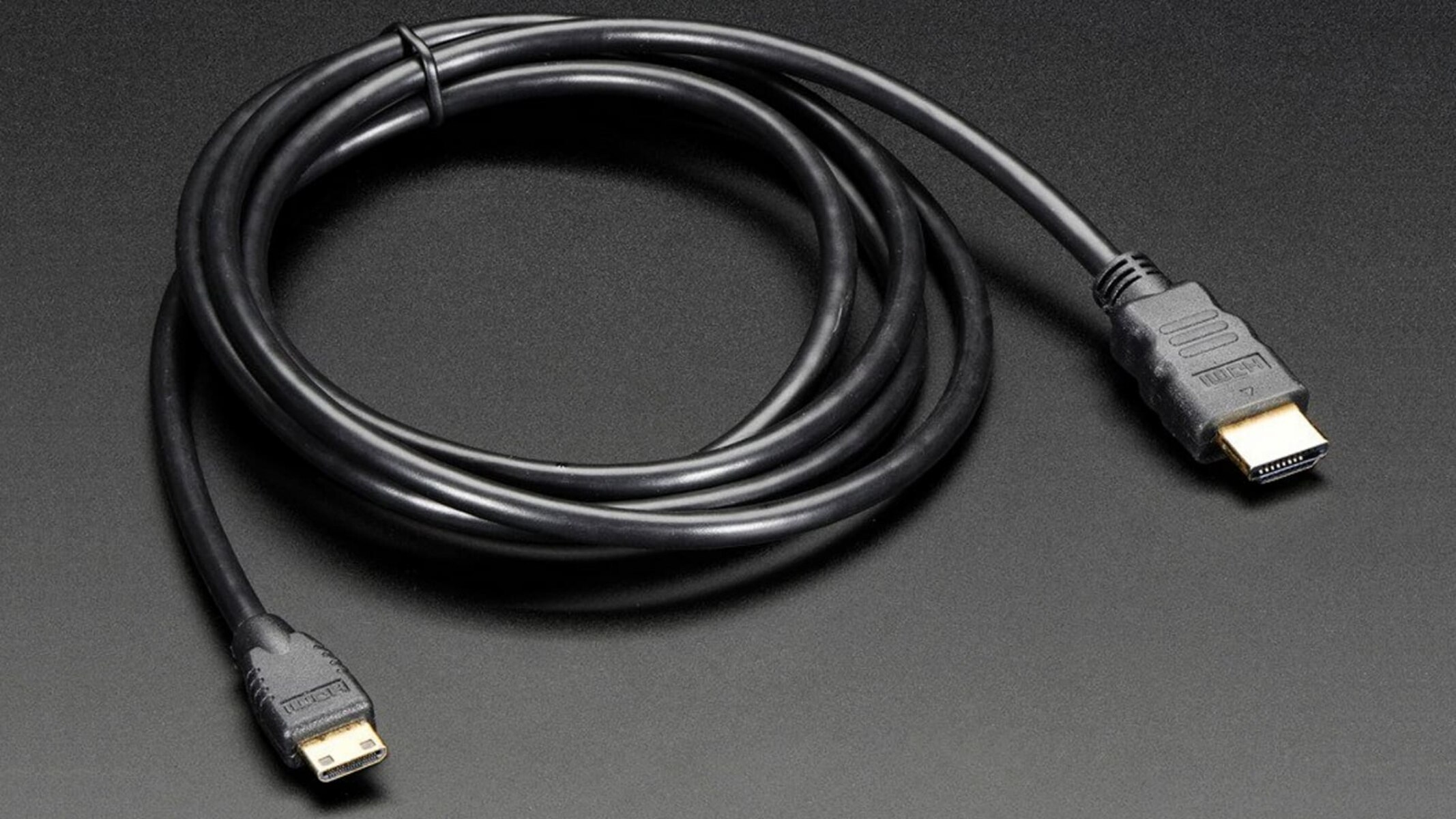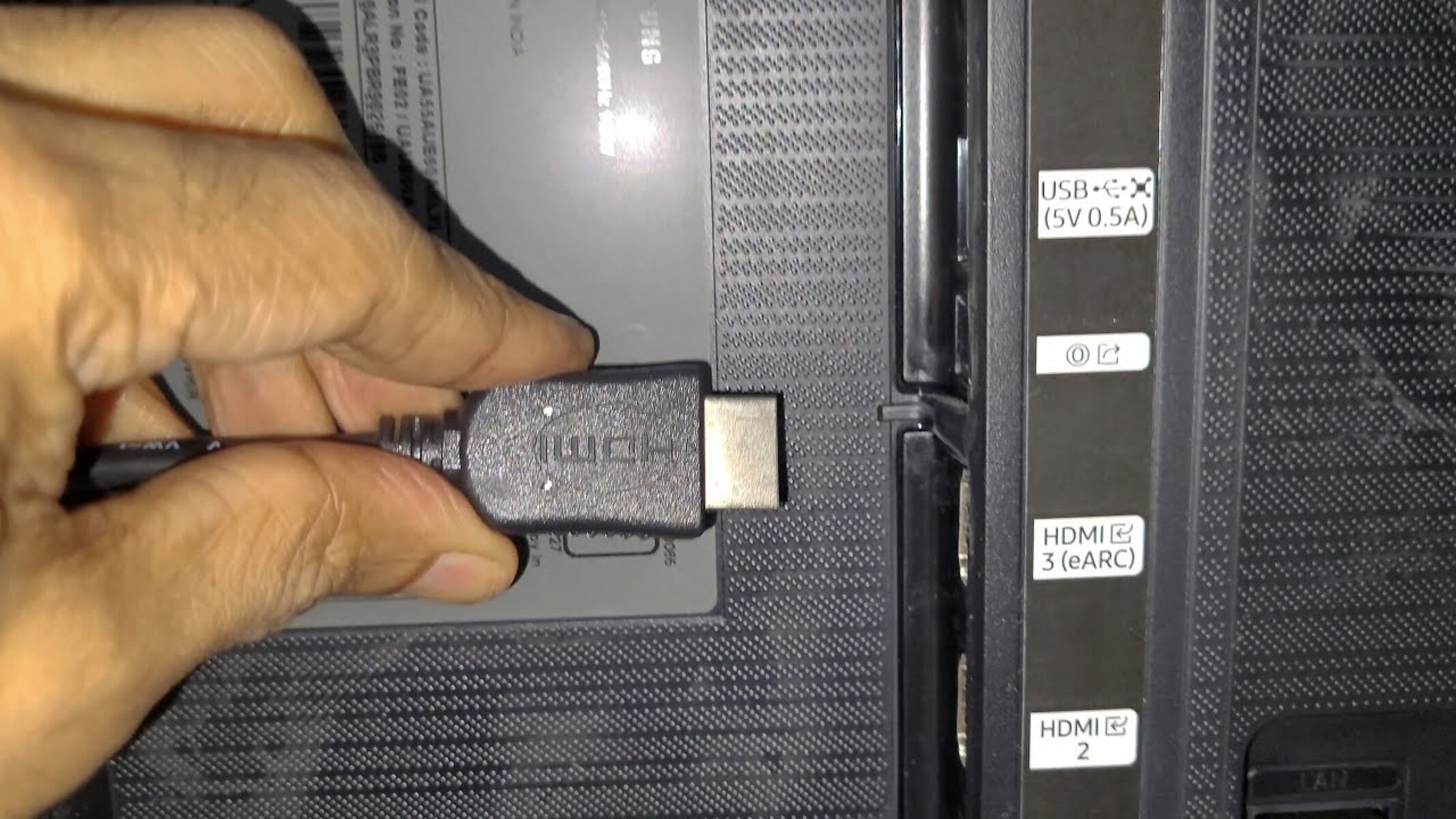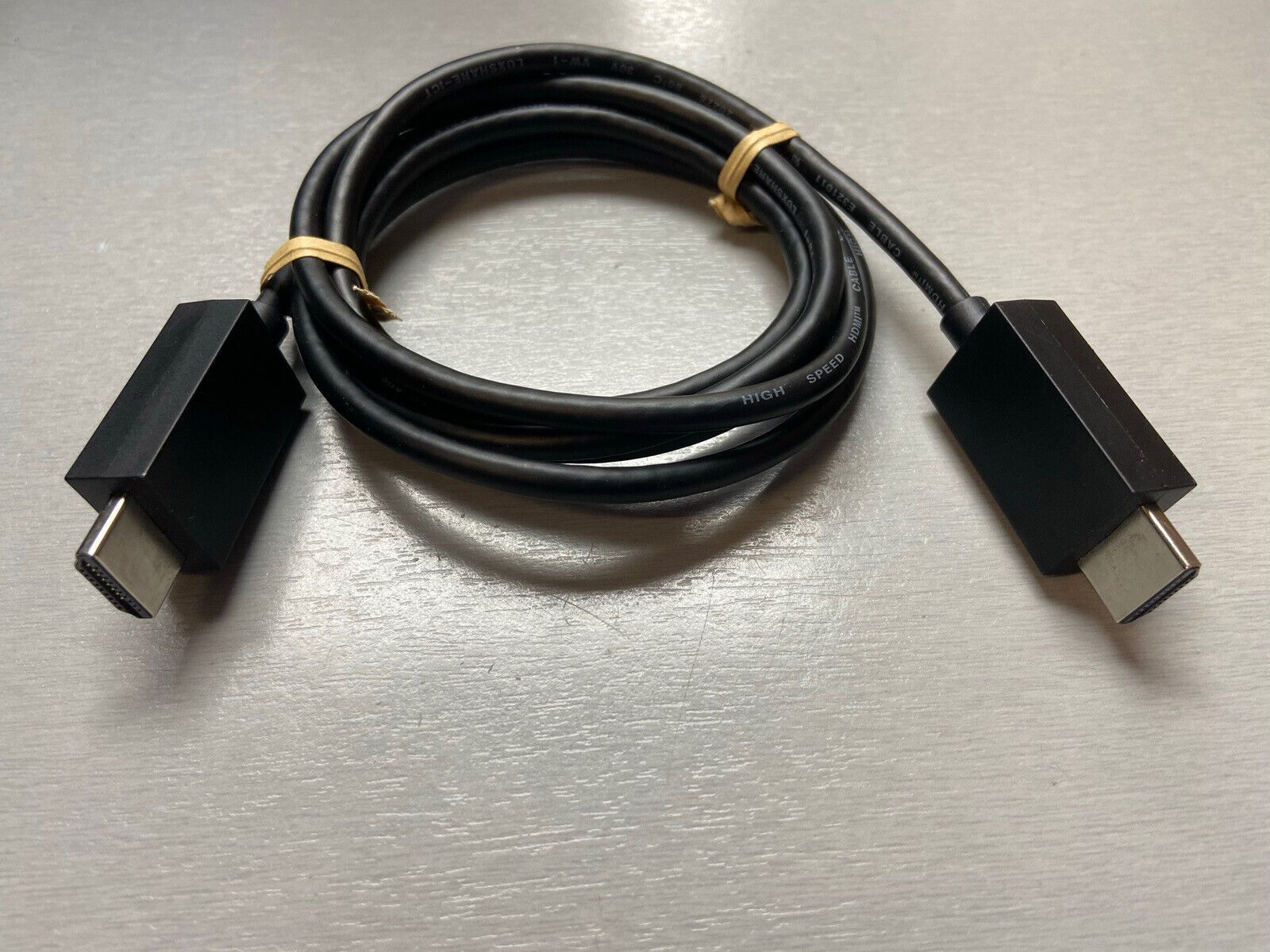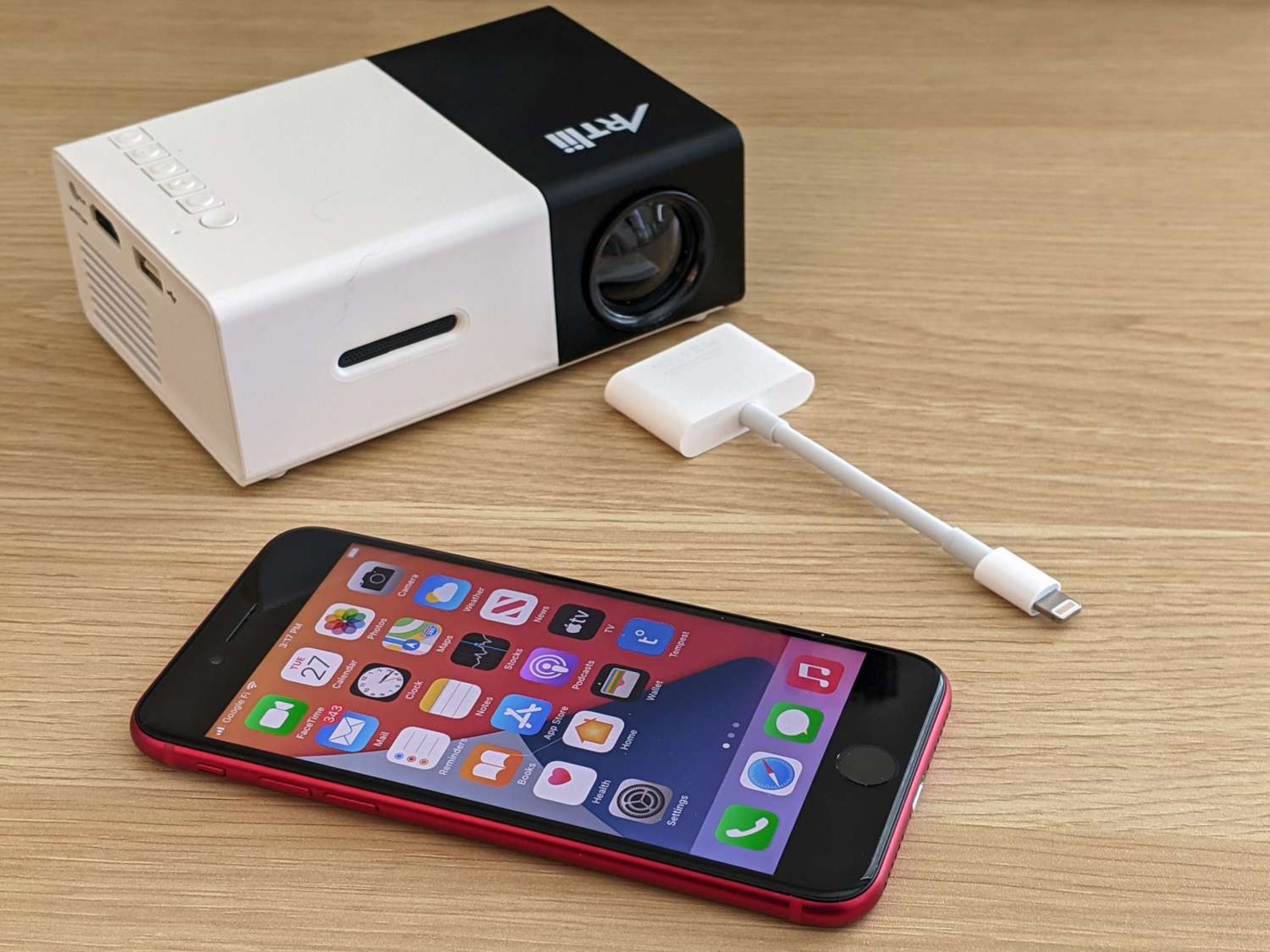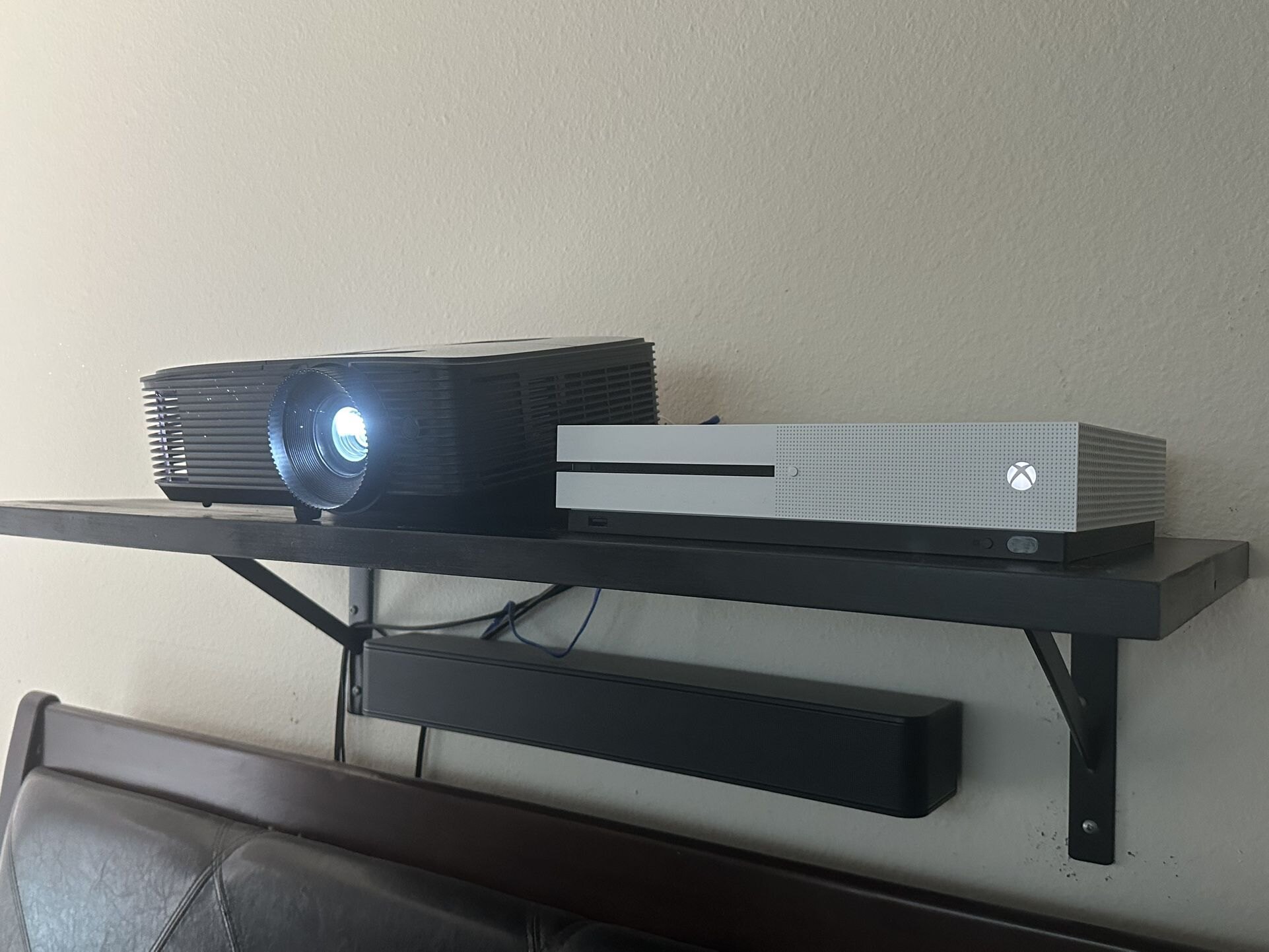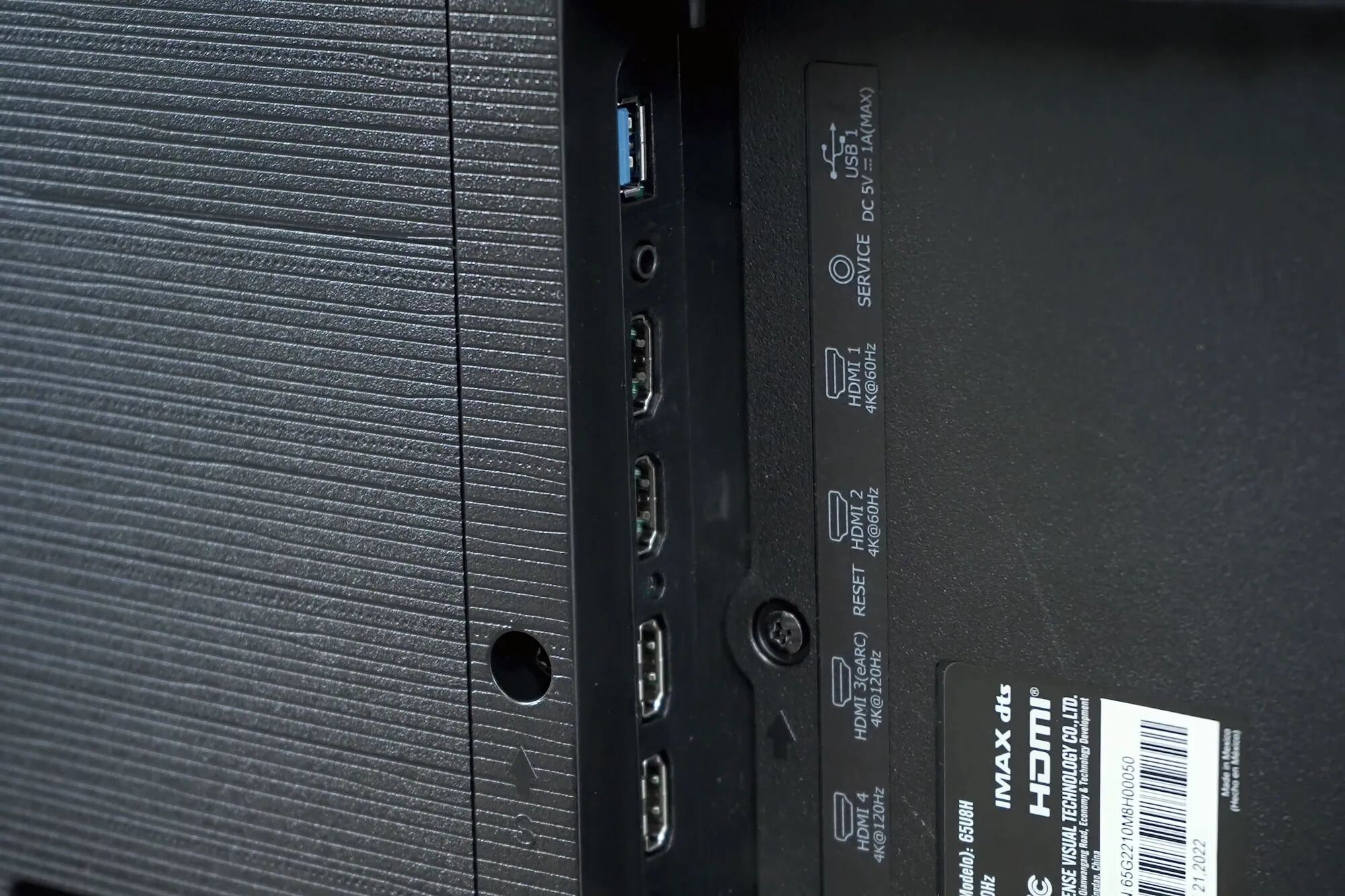Introduction
An HDMI cable is an essential component for connecting various audio and video devices, such as televisions, computer monitors, gaming consoles, and Blu-ray players. It allows for the transmission of high-quality audio and video signals from one device to another. With the growing popularity of high-definition content, having the right HDMI cable becomes crucial for ensuring optimal performance and compatibility.
In today’s market, there is a wide variety of HDMI cables available, each with its own specifications and features. However, many people struggle with identifying the type of HDMI cable they already own or determining the right one to purchase. This article aims to provide you with a comprehensive guide on how to identify the HDMI cable you have and offer tips for choosing the right HDMI cable for your specific needs.
By understanding the different types of HDMI cables, checking cable versions, and becoming familiar with HDMI cable specifications, you will be empowered to make informed decisions when it comes to selecting or upgrading your HDMI cables.
Before we dive into the details, it’s important to note that the world of HDMI cables can sometimes be confusing, with various marketing claims and misconceptions surrounding their capabilities. This article will help debunk common myths and provide you with accurate information to make your HDMI cable selection process much easier.
What is an HDMI cable?
An HDMI cable, short for High-Definition Multimedia Interface, is a digital cable that transmits audio and video signals between devices. It is widely used in the entertainment and technology industry to connect devices such as TVs, projectors, laptops, gaming consoles, and Blu-ray players.
HDMI cables are known for their ability to deliver high-definition audio and video signals without loss of quality. They support standard and high-definition resolutions, including 720p, 1080i, and even Ultra HD 4K. This ensures crisp, clear images and immersive sound for an enhanced viewing experience.
One of the key advantages of HDMI cables is their simplicity and convenience. Unlike older analog cables, HDMI cables carry both audio and video signals in a single cable, eliminating the need for multiple connections. This streamlined approach minimizes cable clutter and makes setup and installation more straightforward.
Additionally, HDMI cables support multiple audio formats, including Dolby TrueHD and DTS-HD Master Audio, which provide a rich and immersive sound experience. This makes them ideal for home theater systems or when connecting to a surround sound setup.
Another notable feature of HDMI cables is their ability to transmit digital signals. Since HDMI cables use digital technology, they are less susceptible to interference or signal degradation compared to analog cables. This results in a more reliable and consistent signal, ensuring a higher quality viewing experience.
Furthermore, HDMI cables have evolved over the years to support additional features and functionalities. For example, newer HDMI cable versions have added support for Ethernet connectivity, allowing for internet access through HDMI-enabled devices. Additionally, HDMI cables with ARC (Audio Return Channel) functionality enable the transmission of audio signals from a TV back to an audio system, eliminating the need for additional audio cables.
Overall, an HDMI cable serves as the backbone for connecting your devices and ensuring seamless transmission of high-definition audio and video signals. Whether you are setting up a home theater system or simply connecting your laptop to a TV, having the right HDMI cable is essential for achieving optimal performance and enjoying a superior viewing experience.
Different types of HDMI cables
When it comes to HDMI cables, there are different types to consider. While the functionality remains the same across all HDMI cable types, there are variations in terms of supported features, bandwidth, and compatibility. Understanding these differences will help you choose the right HDMI cable for your specific needs.
Standard HDMI cables are the most common type found in the market. They support resolutions up to 1080i and are suitable for most everyday audio and video needs. These cables are ideal for connecting devices like DVD players, gaming consoles, and older TVs that do not require higher resolutions or advanced features.
High-Speed HDMI cables, as the name suggests, offer increased bandwidth and support higher resolutions and refresh rates. They are capable of transmitting 4K content at 60Hz, making them suitable for modern high-definition TVs, gaming consoles, and Blu-ray players. High-Speed HDMI cables also support features like 3D content, Deep Color, and x.v.Color, providing an enhanced visual experience.
Premium High-Speed HDMI cables are designed to meet the stringent requirements of the HDMI 2.0 specification. They offer all the capabilities of High-Speed HDMI cables and additionally support features like HDR (High Dynamic Range) for improved color and contrast, Dolby Atmos for immersive sound, and Ethernet connectivity for internet access through HDMI-enabled devices. These cables are recommended for the latest Ultra HD 4K TVs and home theater setups.
Ultra High-Speed HDMI cables are the latest addition to the HDMI cable lineup. They are designed to handle extremely high resolutions of 8K and 10K, as well as higher refresh rates of up to 120Hz. Ultra High-Speed HDMI cables support specifications like HDMI 2.1, Variable Refresh Rate (VRR), Auto Low Latency Mode (ALLM), and Quick Frame Transport (QFT). These cables are intended for future-proofing your setup and are ideal for gamers, content creators, and those seeking the highest possible video and audio performance.
It’s important to note that regardless of the HDMI cable type, backward compatibility is maintained. This means that newer HDMI cables can work with older devices, but they will be limited to the features and capabilities supported by those devices. Additionally, HDMI cables are available in different lengths, ranging from a few feet to longer cable runs, allowing you to choose the appropriate length for your specific setup requirements.
Understanding the different types of HDMI cables will help you select the one that best suits your needs, ensuring optimal performance, compatibility, and future-proofing for your audio and video setup.
How to identify the HDMI cable you have
Identifying the type of HDMI cable you already have can be done by examining the physical appearance and checking for specific markings on the cable itself. Here are a few ways to identify the HDMI cable you own:
- Look for the labeling: Most HDMI cables have labels indicating the type or version of the cable. This information may be found on the cable packaging, the cable itself, or both. Common labels to look for include “Standard HDMI,” “High-Speed HDMI,” “Premium High-Speed HDMI,” or “Ultra High-Speed HDMI.”
- Check for color coding: Some HDMI cables have specific color coding to indicate their capabilities. For example, older HDMI cables may be black, while High-Speed HDMI cables may be labeled with a blue color. Premium High-Speed HDMI cables are often labeled with a red color, and Ultra High-Speed HDMI cables may have a distinctive green color.
- Examine the connectors: Another way to identify HDMI cables is by examining the connectors. The most common HDMI connector is the Type A, which is a standard size used in most devices. However, newer HDMI cable versions, such as HDMI 2.1, may use the smaller Type C (Mini HDMI) or Type D (Micro HDMI) connectors. If your cable has one of these alternative connectors, it may indicate a specific HDMI cable version.
- Consider the cable length: While not directly related to identifying the HDMI cable type, knowing the cable length can provide hints about its capabilities. Longer cables may require higher specifications to maintain signal integrity, meaning they are likely High-Speed HDMI, Premium High-Speed HDMI, or Ultra High-Speed HDMI cables.
- Consult the documentation: If you still have the original packaging or documentation that came with the HDMI cable, it may explicitly state the cable type or version. Refer to the provided information to determine the HDMI cable you own.
Identifying your HDMI cable is essential for understanding its capabilities and compatibility with your devices. If you are unsure about the type or version of your HDMI cable, using one of the methods mentioned above can help you determine the cable you currently have and make informed decisions when upgrading or purchasing new HDMI cables in the future.
Checking the version of your HDMI cable
Knowing the version of your HDMI cable is important, as it determines the supported features, resolutions, and overall performance. Here are a few ways to check the version of your HDMI cable:
- Inspect the cable and connectors: Examine the HDMI cable and its connectors for any markings or labels that indicate the version. Look for labels such as “HDMI 2.0,” “HDMI 2.1,” or “High-Speed HDMI.”
- Check the packaging or documentation: If you still have the original packaging or documentation for your HDMI cable, it may include information about the version. Look for specifications, product descriptions, or user manuals that mention the cable version.
- Employ an online database or manufacturer’s website: Many manufacturers provide online resources where you can input the cable model number or other details to retrieve information about the cable version. Additionally, online databases and forums dedicated to HDMI cables can often provide insights and specifications for specific cable models.
- Use HDMI testing tools: There are HDMI testing tools available in the market that can determine the version of your HDMI cable. These tools analyze the cable’s capability and provide a detailed report on the supported HDMI version and features.
- Consult the retailer or manufacturer: If you are unable to find any information about the cable version using the methods mentioned above, reach out to the retailer or manufacturer directly. They should be able to provide you with accurate information about the cable’s version based on its model or serial number.
Knowing the version of your HDMI cable can help you understand its compatibility with your devices and ensure that you are utilizing its maximum capabilities. It is particularly important when connecting to newer devices that may require specific HDMI versions to support advanced features, such as HDMI 2.1’s support for 8K resolution, HDR, and variable refresh rates.
Keep in mind that while HDMI cable versions indicate their capabilities, backward compatibility is maintained. This means that newer HDMI cables can work with older devices, but they will be limited to the features supported by those devices.
By checking the version of your HDMI cable, you can make informed decisions when connecting devices, upgrading your audiovisual setup, or selecting the appropriate HDMI cables for your specific requirements.
Understanding HDMI cable specifications
When choosing an HDMI cable, it’s important to understand the different specifications and features that can impact the performance and compatibility. Here are some key specifications to consider:
- Bandwidth: HDMI cables are rated based on their bandwidth, which determines the amount of data they can transmit. Higher bandwidth allows for higher resolutions and refresh rates. It’s important to choose a cable that supports the necessary bandwidth for your intended usage, such as watching 4K movies or gaming at high refresh rates.
- Resolution support: HDMI cables can support various resolutions, from standard HD (720p) to Ultra HD (4K) and even beyond. Ensure that the cable you choose can handle the specific resolution you need for your devices. For example, if you have a 4K TV, opt for a cable that supports 4K resolutions.
- Refresh rate support: The refresh rate refers to the number of times the image on the screen is refreshed per second. Higher refresh rates result in smoother images, especially when it comes to gaming or watching fast-action scenes. Make sure that your HDMI cable can handle the desired refresh rate for your content and devices.
- Color depth: HDMI cables support different color depths, which affect the range and accuracy of colors displayed on the screen. Deeper color depth provides a more vibrant and realistic viewing experience. Look for cables capable of supporting the desired color depth, such as 24-bit or 48-bit color.
- Audio support: HDMI cables carry not only video but also audio signals. Various audio formats are supported, including Dolby Atmos and DTS:X, which provide immersive sound experiences. Ensure that your HDMI cable can handle the audio requirements of your devices and audio setup.
- Additional features: HDMI cables may support additional features like Ethernet connectivity, ARC (Audio Return Channel), CEC (Consumer Electronics Control), and more. Determine which features are essential for your setup and ensure that the cable you select has the necessary support.
It’s important to note that HDMI specifications evolve over time. Newer HDMI versions, such as HDMI 2.0 and HDMI 2.1, offer enhanced features and increased bandwidth. However, backward compatibility is maintained, allowing newer HDMI cables to work with older devices.
When selecting an HDMI cable, it’s generally recommended to choose one that exceeds the minimum specifications required by your devices. This allows for future compatibility and ensures that you can take advantage of new features as they become available.
Understanding HDMI cable specifications will help you make informed decisions when choosing the right cable for your specific audio and video setup. By considering factors like bandwidth, resolution support, refresh rate support, color depth, audio support, and additional features, you can ensure that your HDMI cable meets your requirements and delivers optimal performance.
Tips for choosing the right HDMI cable
With numerous HDMI cable options available, it’s essential to choose the right one for your audio and video needs. Here are some helpful tips to consider when selecting an HDMI cable:
- Assess your requirements: Determine the specific requirements of your devices and setup. Consider the resolution, refresh rate, and audio capabilities you need to ensure compatibility and optimal performance.
- Choose the right version: Select an HDMI cable that supports the latest HDMI version available. This ensures compatibility with newer devices and future-proofs your setup for upcoming technologies and features.
- Consider the cable length: Measure the distance between your devices and choose an HDMI cable that is long enough to connect them comfortably. However, avoid excessively long cables, as they can result in signal degradation and loss of quality.
- Check for high-speed support: For most modern devices, opt for a High-Speed HDMI cable to ensure support for higher resolutions, refresh rates, and additional features like 3D or HDR.
- Consider durability: Look for HDMI cables that are made with quality materials and have sturdy connectors. Cables with gold-plated connectors can provide better conductivity and longevity.
- Avoid unnecessary extras: Some HDMI cables may come with additional features or claims of superior performance that may not greatly impact the actual audiovisual experience. Focus on the essential specifications and features that align with your needs rather than being swayed by marketing hype.
- Read reviews and recommendations: Research online reviews, forums, and recommendations from trusted sources to gain insights into the experiences of other users. This can help you make an informed decision and choose a reputable brand or model.
- Consider value for money: While it’s important to choose a reliable HDMI cable, there’s no need to overspend on expensive options if they exceed your necessary specifications. Look for a good balance between quality, performance, and affordability.
- Buy from reputable sellers: Purchase your HDMI cable from reputable sellers or authorized retailers to ensure that you are buying a genuine product. Be cautious of counterfeit or low-quality cables that may not provide the desired performance or longevity.
- Keep your setup organized: Consider cable management solutions to keep your HDMI cables and other connections tidy and organized. This not only improves the aesthetics of your setup but also helps prevent damage and tangling of cables.
By following these tips, you can choose an HDMI cable that meets your requirements, provides optimal performance, and ensures a seamless audio and video experience for your devices. Remember to evaluate your specific needs, check the necessary specifications, consider value for money, and rely on trusted sources for recommendations when making your decision.
Common misconceptions about HDMI cables
When it comes to HDMI cables, there are several common misconceptions that can lead to confusion and unnecessary expenses. Let’s debunk some of these misconceptions:
- Expensive HDMI cables provide better performance: This is one of the most prevalent misconceptions. In reality, as long as an HDMI cable meets the necessary specifications for your devices, there will be no discernible difference in audio or video quality between an expensive cable and a more affordable one. Don’t fall into the trap of spending extra money on expensive cables in the belief that they will provide superior performance.
- “Premium” or “High-End” HDMI cables are always better: Similar to the first misconception, the labeling or branding of HDMI cables as “premium” or “high-end” does not guarantee any significant performance improvement. These terms are often used for marketing purposes and may not reflect actual differences in quality or capabilities compared to standard or high-speed HDMI cables.
- Higher-priced HDMI cables are more durable: Price is not an indicator of cable durability. While it’s essential to choose an HDMI cable with sturdy connectors and quality construction, the price alone does not guarantee durability. Assess the build quality and material used in the cable’s construction to determine its durability, rather than relying solely on price.
- All HDMI cables are the same: While it’s true that HDMI cables with the same specifications provide the same performance, not all HDMI cables are created equal. Poorly constructed or counterfeit HDMI cables may not adhere to proper specifications and may result in signal degradation or connectivity issues. It’s important to buy from reputable sources and choose cables from trusted brands that adhere to industry standards.
- Older HDMI cables are obsolete: HDMI cables have backward compatibility, meaning older cables can still work with newer devices. However, they may be limited to the specifications and features supported by those devices. Unless you need the specific capabilities provided by newer HDMI cable versions, there is no need to discard your existing cables.
- Cable length affects quality: The length of an HDMI cable does not have a significant impact on audio or video quality, as long as it meets the necessary specifications. Properly designed and well-constructed HDMI cables can deliver reliable signals across varying lengths. However, excessively long cables may introduce signal degradation, so it’s important to choose an appropriate length for your specific setup.
- HDMI cables need to be replaced frequently: HDMI cables are built to last and do not require frequent replacement. As long as your current cables meet the necessary specifications for your devices, there is no need to upgrade or replace them unless you are upgrading to newer devices with different connectivity requirements.
By dispelling these misconceptions, you can make more informed decisions when it comes to purchasing and using HDMI cables. Save yourself from unnecessary expenses and choose HDMI cables based on their adherence to specifications, build quality, and genuine value rather than falling for marketing gimmicks or misleading information.
Conclusion
Choosing the right HDMI cable is crucial for ensuring optimal audio and video performance while connecting your devices. By understanding the different types of HDMI cables, checking their versions, and considering the specifications, you can make informed decisions that align with your specific needs.
Common misconceptions about HDMI cables, such as the belief that expensive cables always provide better performance or that older cables are obsolete, can lead to unnecessary expenses and confusion. It’s important to rely on accurate information and reputable sources when making decisions about HDMI cables.
Remember to assess your requirements, consider the necessary specifications for your devices, and choose HDMI cables that provide the appropriate support for resolutions, refresh rates, and audio formats. Avoid overspending on unnecessary features or falling for marketing gimmicks that may not significantly impact the audiovisual experience.
When purchasing HDMI cables, buy from reputable sellers or authorized retailers to ensure you are getting a genuine product. Additionally, consider factors like durability, cable length, and value for money to make the most suitable choice.
By following these guidelines and dispelling common misconceptions, you can confidently select the right HDMI cables for your audio and video setup, ensuring a seamless and high-quality viewing experience for all your devices.







